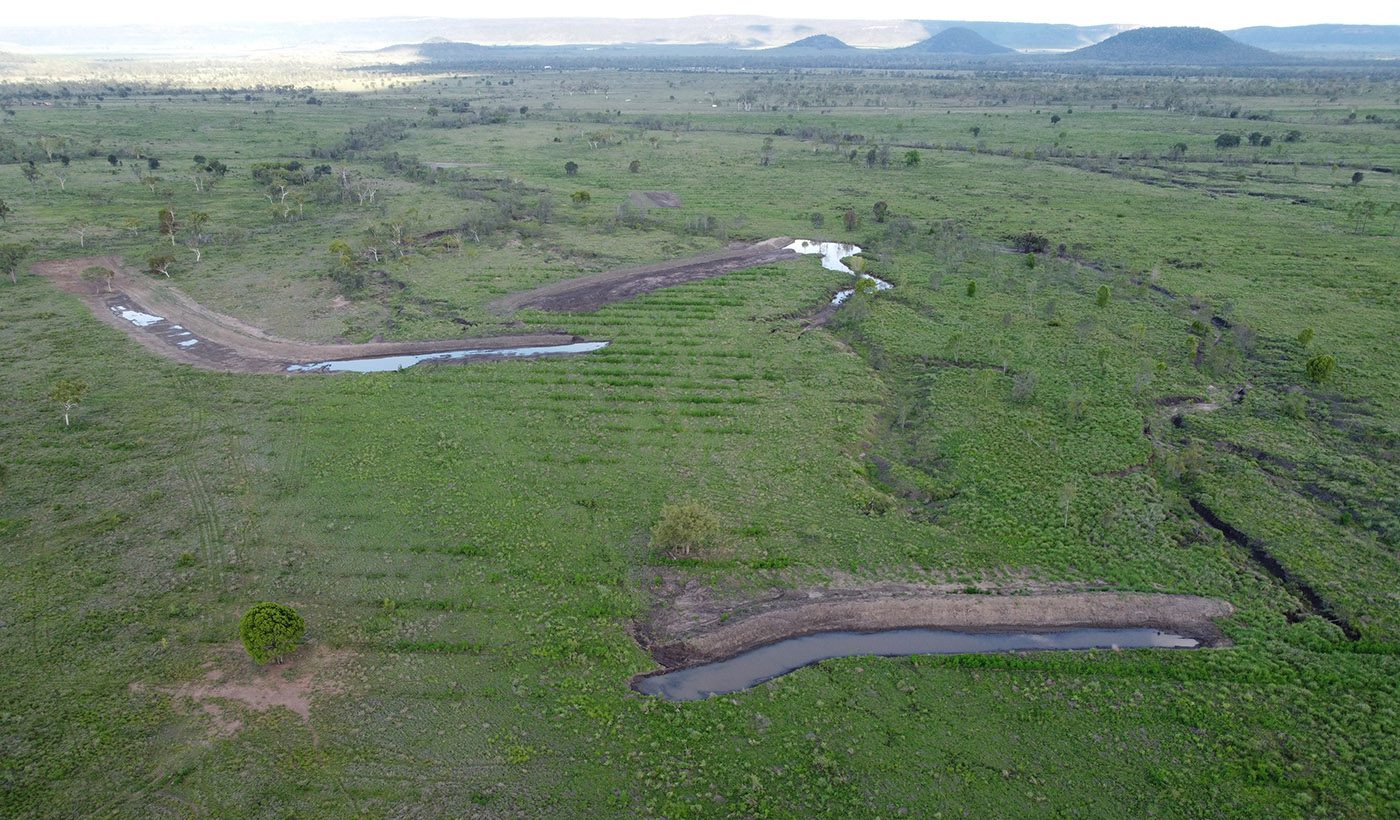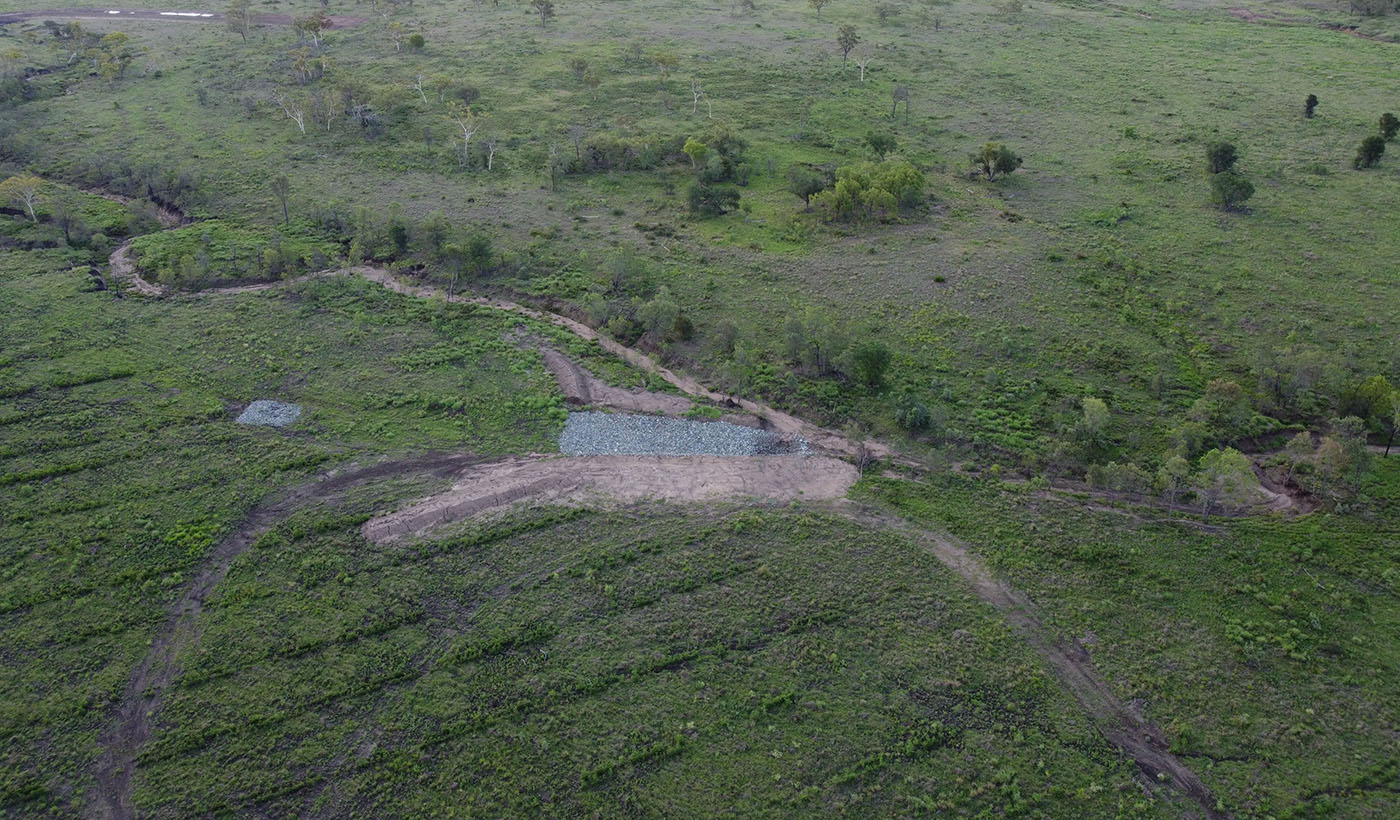Weetalaba withstands the test of first wet season… and it was rigorous
An aerial view of the landscape rehydration project on Weetalaba, a grazing property near Collinsville. In the foreground is a rock chute, rehydration banks can be seen in the background. The banks divert flows into the rock chute where it re-enters the water course.
The dust had barely settled on a landscape rehydration project when it copped a lashing from an intense rain event which dropped 170mm rain over several days.
Not an ideal scenario because groundcover hadn’t had a chance to establish, and it meant some of the structures needed minor maintenance work.
The project site is located on Weetalaba, a grazing property near Collinsville.
Designed by Mulloon Consulting, the project included the construction of several diversion bunds, rehydration banks and a rock chute, aimed to reduce erosion and improve landscape function.
The rock chute was designed to withstand and pass large flows, and it passed its first rain test.
The site has black soil alluvial features, characteristic of a floodplain pocket, with several erosion gullies. Earthworks were carried out by local contractors Colls Earthmoving.
A total of 100 tonnes of sediment will be reduced from entering the Great Barrier Reef lagoon each year from this project.
Landscape rehydration techniques aim to slow water movement across the landscape, and to promote infiltration rates to enhance pasture growth. Slowing water movement reduces erosion and increases pasture yields, generating economic and environmental rewards.
A grazing management plan is being implemented to improve landscape function, specifically groundcover.
The site will continue to be monitored.
This project was completed through the Landholders Driving Change project in November last year. Landholders Driving Change is funded by the partnership between the Australian Government’s Reef Trust and the Great Barrier Reef Foundation.
Rehydration banks constructed above the gully heads hold water in the landscape for longer, improving infiltration, instead of running into the gully system.
ALSO IN THIS ISSUE:



